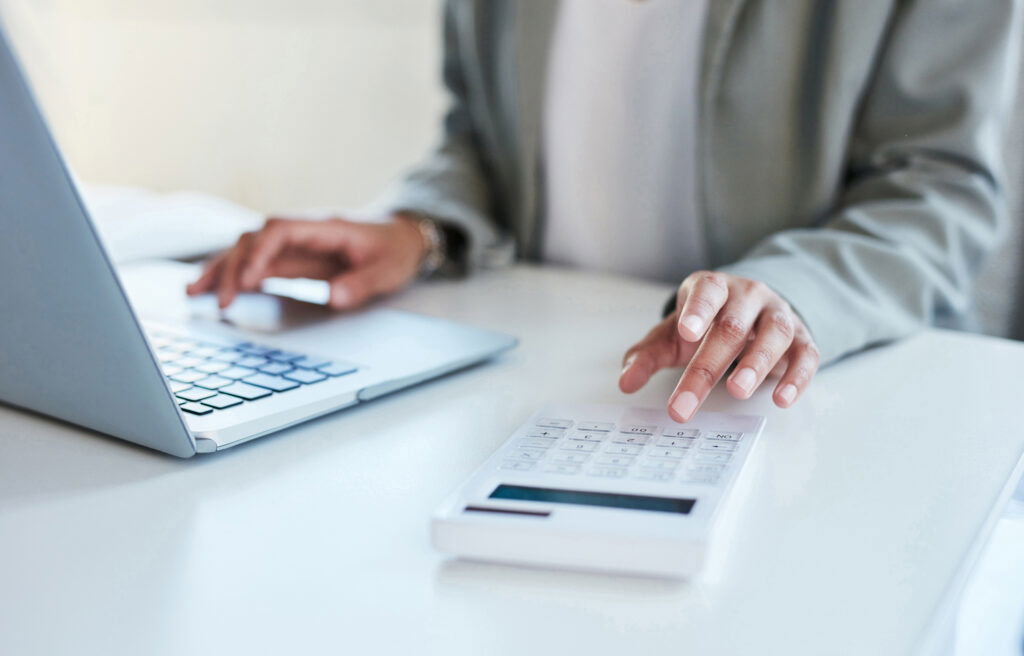Organization comes more naturally to some compared to others. For example, some of us kept our room and belongings in tip-top shape growing up. You know, the “There’s a place for everything and everything’s in its place” kind of people. Then, there are the others who had a habit of shoving papers into their backpacks sans folders—and digging through a mound of clothes to piece together an outfit.
As much as people in the second group may hate to admit it, those in the first tidy echelon are onto something. We are heavily influenced by our surrounding environment. This means if we are constantly inundated with messes, lost files and forgotten tasks, it can take a toll on our mental state and bring on unnecessary stress. On the flip side, an orderly workplace or home keeps us calm and focused—the perfect storm to achieve maximum productivity. Use these tips on how to organize your office for the best production at work and beyond.
Why Organization Boosts Productivity
If you struggle to dial in when your room, desk, office, cubicle or other workspace is in disarray, you’re not alone. But, more importantly, there’s science to back up your struggle. One 2024 study published in Neuron shows that visual clutter changes the way information flows to your brain. Additionally, long-standing research from the Journal of Neuroscience suggests that seeing multiple stimuli at one time can impact your ability to focus and think clearly.
Essentially, taking in more with our eyes also overwhelms and stresses out our brains (a cognitive overload, to put it in more technical terms), making it more difficult to work efficiently and make decisions. Clutter has even been shown to negatively affect mood, self-esteem and sleep.

Conversely, a space that’s clean and free of distractions can help us concentrate, be more productive and gain mental clarity. The psychology behind organized environments says that they can help us regain a sense of control, regain time lost from constantly searching for things and recover a sense of security and ease.
It turns out Marie Kondo wasn’t just decluttering to make it on TV. This kind of organized approach really does make a difference that goes beyond aesthetics.
Related: 7 Easy Ways to Maximize Your Workspace and Productivity
Simple Steps to Declutter Your Workspace Or Home Office
Clutter isn’t just the stuff on your floor. Professional organizer Peter Walsh once said, “Clutter is anything that gets between you and the life you want to be living.” What he means is that clutter refers to physical items, sure. But, the word can encompass things like digital and emotional clutter as well—anything that could interfere with you reaching your goals. The following steps will help you declutter your home office or workspace while also eliminating baggage in other areas.
1. Start Small
How would you eat an elephant? One bite at a time. Focus on just one area to ease yourself into the process and build momentum. Maybe you start with a desk drawer, closet, the fridge or your email inbox.
2. Take Inventory
Pull out everything from this chosen space and take note of what is there. Pulling out items at once can help you take a more comprehensive look at what you have and help you decide on where items go. If you feel overwhelmed or are pressed for time, you can pull everything out of only a specific area before you move on.
3. Divide Items Into Categories
Separate your items into piles of “keep,” “discard” and “donate.” You could even create a “move” category of items that need to be organized in a different space going forward. Things like trash or files from years ago will be easy to toss or place. But others may lead to more thought and contemplation. You may want to use a home inventory list to help as you categorize different items.
4. Let Go
If you find yourself struggling with those discard and donate piles, ask yourself a few questions: When was the last time I used this? Does it have value? Is it easily replaceable? These can help lead you to your answer. If you find yourself holding on due to sentimentality, consider snapping a picture of it instead to maintain the memory. You can also use a decluttering checklist to help you decide what to toss or give away.
5. Repeat The Decluttering Process
Replicate this process again and again until every space has been addressed.
Create An Organized Workspace
Once you’ve chopped the weight, so to speak, the true task of organizing your workspace can begin. These tips on workspace optimization will help you tailor your environment to your needs and set you up for more efficient work hours.
Set Up Systems For Your Work Area
Give all the items in your “keep” pile a designated home. Set everything up in a manner that is intuitive and aligns with your daily processes. Create folder systems for files (both digital and physical documents), break out your labeler, group similar objects and bundle those pesky cables and cords.
Clear Off Your Desk
Consider keeping only absolute necessities on your work surface. Keep out your computer, to-do list and pencils—the simpler, the better. Stow the rest away in drawers or cabinets until it’s needed. Out of sight, out of mind.
Work On Digital Decluttering
Don’t neglect your computer when it comes to organizing your workspace for peak productivity. A screen littered with icons can be anxiety-inducing. Go through and delete old files, unneeded documents and unused applications.
Then, consolidate the rest into marked folders saved to your desktop or to a cloud storage service like OneDrive or Google Drive for more streamlined workflows. For emails, remove junk or spam messages and set up your inbox to filter various kinds of communications.
Enhance Your Lighting & Layout For Better Production
You don’t need to study the art of feng shui, but it can help if your space at least strikes a balance between function and comfort. Start with a room that has lots of natural light and little to no outside noise. Face your desk toward a window or door and then fill in other furniture where it’s accessible but not in the way. Consider adding ergonomic pieces like a comfortable chair or footrest. Lastly, top it off with elements that are grounding or that inspire you. Think plants or artwork.
Develop Habits For Ongoing Organization
One of the largest challenges will be learning how to stay organized at work. It typically takes a continual effort to adopt these new behaviors and lean into a more structured lifestyle. It’s often cited that it takes an average of 66 days to form a habit. So, be patient and follow these tidbits of advice to keep yourself honest.
Dedicate Time to Daily Tidying Of Your Workspace
Dedicate at least five to 10 minutes per day to organization maintenance. For example, spend the tail end of your workday clearing your desk, returning items to their place, throwing out trash, backing up files, etc. Your tomorrow self will thank you.
Use The ‘One In, One Out’ Rule Of Decluttering
Every time you bring something new into your space, remove an existing item to avoid clutter buildup. This simple rule makes it easier to tidy up since you’re not continuing to add clutter. It also has the added benefit of encouraging mindful spending.
Plan, Plan, Plan
Use your planner, calendar and to-do lists to stay on top of your schedule and tasks. Mastering your schedule has multiple benefits when it comes to achieving your productivity goals and thriving in life. In addition to increasing productivity, it can also help you improve your focus, produce higher-quality work and even have a better work-life balance.
Use Apps & Tools to Stay Organized
Apps like Todoist can help you manage both personal and professional daily responsibilities. Asana and Trello are additionally great places to manage tasks. Plus, all three have the ability to send you reminders when deadlines are approaching.
Try Time Blocking
Allocate specific times of the day to specific tasks or projects. This can help keep you focused on one thing at a time. It will also help ensure that nothing is falling through the cracks.
Powerful Strategies For Peak Productivity At Work & In Everyday Life
Up the ante by supplementing these organizational methods with powerful productivity tips to help you achieve more.
Limit Distractions & Set Boundaries
When you’re learning how to organize your day to be more productive, limiting distractions is a great place to start. Establish distraction-free zones such as your home office or work desk where you don’t bring in outside noise like social media. Set boundaries with family or coworkers to let them know not to disturb you in this space. Tools such as the Freedom app can also block websites, apps or the entire internet during times when you need to buckle down.
Quick tip: If you’re struggling with distractions from technology or online influences, consider a digital media detox to help you have a fresh slate.
Prioritize Your Tasks
Task prioritization is another crucial way to achieve peak productivity. Your time is valuable—and limited. Consider different ideas to wisely to tackle your most paramount tasks. For example:
- The Eisenhower Matrix can help you identify where to start by categorizing projects into four quadrants based on importance and urgency.
- The Pareto Principle (or the 80/20 rule) is another great tool to have in your back pocket. The rule states that 20% of efforts create 80% of results. Under this ideology, you will pinpoint and focus on the 20% of tasks that will have the largest impact.
Practice Good Self-Care
Another powerful way to be at your peak is to consistently practice good self-care. You can’t pour from an empty cup. You don’t necessarily need to go on long luxurious vacations to recharge (though that could be a great option). An alternative is to do small things every day to boost your productivity. This can include taking breaks in between tasks, getting enough sleep, moving your body and mindfulness activities like journaling or meditation.
Related: 20 Essential Time Management Skills & Strategies
Start Building A More Productive Workspace
Being at peak productivity all the time may not be possible; we need downtime and self-care. However, there are many simple steps we can take to meet our productivity goals.
The question of how to stay focused and productive at work boils down to creating an environment that aligns with your goals. Removing physical clutter can limit distractions and create a more efficient workspace. But you can also learn to prioritize tasks, establish systems, conduct a digital overhaul and even enlist the help of project management tools to commit to a long-term plan of ongoing organization.
Even if you just tackle a single desk drawer, you can start building those habits today. Organizing just one small area could be enough to reduce your stress levels and help you regain a sense of control. The relief may even lead to the organization of a second drawer, or maybe your entire office. You may even consider organizing your home to help you be more productive at work. The positive benefits of having clean, organized spaces could help you achieve your productivity goals and gain that peak productivity level you’re looking for.
Photo by Svitlana Hulko/shutterstock.com




